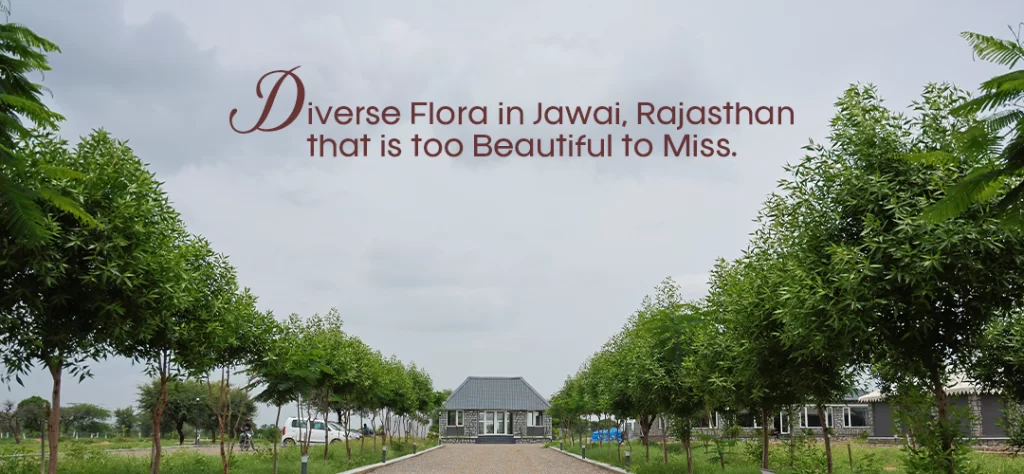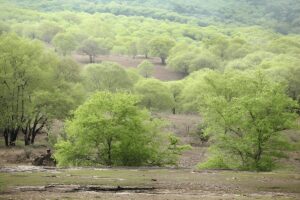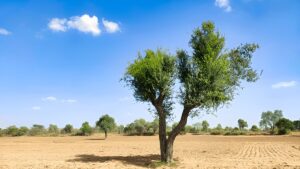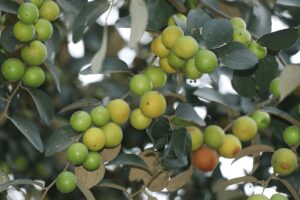
Jawai, Rajasthan is best known for its majestic leopards and granite hills, but hidden beneath this wild charm lies an equally captivating secret; its resilient flora. The Flora in Jawai ,Rajasthan thrives in rocky terrain and harsh climates, playing a vital role in sustaining the region’s biodiversity. This blog explores the unique and untamed plant life of Jawai.
Understanding the Vegetation of Jawai
Before understanding the Flora of Jawai, it’s compulsory to know the functionality of the ecosystem it grows. Jawai lies in a semi-arid zone that gives an experience of extreme temperature fluctuations and low rainfall. The surroundings are mostly rocky, with larger granite formations dominating the topography.
Due to this, vegetation in Jawai is a mix of dry deciduous forests, scrublands, and thorny bushes. These plant types are adapted to survive in drought-prone conditions and form the base of the region’s food chain, supporting herbivores, insects, birds, and predators alike.
Signature Flora in Jawai,Rajasthan: Things to Find
Dhok (Angogenissus pendula)
Dhok is the most abundant species from Jawao. This species is found on the rocky and dry slopes in Jawai. The trees have small leaves which aids in minimizing water loss. During the hot afternoons, the small leaves provide shade to deer, antelopes, and leopards.

Khejri (Prosopis cineraria)
Khejri is considered sacred in Rajasthan’s culture. It is a drought resistant tree which enriches the soil. It is often found close to human habitation and in the scrubland. Livestock and some native herbivores feed on the valuable Khejri leaves.

Ber (Ziziphus mauritiana)
Ber bears small edible fruits, which is a source of food for the locals. It is also consumed by birds and monkeys. The plant has a tangled and thorny structure which provides cover to smaller animals from predators.
Because of the sparse rainfall, Cacti and other succulent plants are common around Jawai.

Seasonal Shifts and Flora in Jawai
The Flora in Jawai changes dramatically with each of the seasons. During the monsoon (July – September), the rocky land is surprisingly green. Wild grasses, creepers and seasonal flowers emerge and butterflies and bees flock to enjoy elements of bloom.
On the other hand, the summer months (April – June) offer a stark contrast and decidedly less greenery. But in this time the drought-resistant plants show what they can survive. The plants conserve moisture by virtue of their deep roots and waxy leaves and are very resilient against the extreme dry environment.
During winter (November – February), moderate temperatures allow for shrubs and smaller trees to thrive during the winter season while displaying golden and olive landscapes. For botanists and photographers, this can be one of the best seasons to explore the flora in Jawai.
Flora and Fauna: The Delicate Balance
Flora in Jawai is vitally important for the balance in the ecology of Jawai; it offers
- – Food to herbivores such as nilgai, chinkara, and porcupines.
- – Cover and Birdwatching in Jawai sites for raptors, owls, hornbills, and many species of parakeets.
- – Concealment and stalking grounds, for predators such as leopards and hyenas.
Interestingly, many safari guests may not realize that, by using the natural vegetation and rocks, the success of leopard sightings in Jawai is also due to the fact that the way they camouflage into the landscape using the natural vegetation and rocks.
The flora in Jawai doesn’t just coexist with its fauna; it actively enables their survival.
People’s relationship with flora in Jawai, Rajasthan
The Rabari herders of Jawai have interacted with the region’s flora and fauna for a long time. They have relied on the local flora for:
- Grazing livestock in pre-existing pastures.
- Traditional medicine, which includes using herbal teas and tree bark for various ailments.
- Temporary shelters constructed from thorny shrubs arranged into circles along with dry branches for fuel.
Even with the rise of tourism, The Rabari Tribe still honours and conserves the vegetation in Jawai, which illustrates a unique way of coexisting with the environment.
Conservation of Flora in Jawai, Rajasthan
As tourism grows in the region, so does the need for environmental responsibility. The flora in Jawai is delicate and slow-growing due to the tough climate. Off-road driving, overgrazing, deforestation, and careless trekking can cause irreversible damage to these plants.
Local eco-resorts and leopard safari lodges have started incorporating conservation efforts by:
- Educating tourists on local vegetation.
- Replanting native trees.
- Avoiding the use of invasive species in landscaping.
Promoting awareness about the flora in Jawai is crucial not just for ecological balance, but also for enhancing the quality of responsible tourism.
Why Should Nature Enthusiasts Explore the Flora in Jawai,Rajasthan?
While most people visit Jawai for its leopard sightings and dramatic landscapes, there’s a whole different experience waiting for those who want to slow down and observe the plant life.
Botanists, herbalists, photographers, and eco-tourists can find much joy in studying the flora in Jawai. Whether it’s watching a cactus bloom against a fiery sunset or identifying rare medicinal plants in a ravine, every step reveals a new secret of this rugged land.
Walking safaris, nature trails, and guided ecological tours can offer deeper insights into how plant life thrives and shapes the Jawai ecosystem.
Conclusion
Often overlooked, the flora of Jawai significantly contributes to the region’s identity. The flora is ruggedly resilient, rich in biodiversity, and supports diverse life forms that include humans and animals. From towering trees to medicinal herbs, every plant narrates a story of survival in one of India’s uniquely challenging terrains.
If you’re planning a Jawai Bandh Trip, take a moment to appreciate more than just the leopards and hills. Look closer at the rocks, bushes, and trees, and you’ll witness the silent strength and beauty of the flora in Jawai.
How to make Leopard Safari Resorts in Jawai, Rajasthan Worthwhile ?
Your visit to Leopard Safari Resorts in Jawai, Rajasthan should be one that you never forget. For that you must also ensure that your stay is at a place that provides the ultimate comfort.Therefore stay at Seasons Jawai and delve into the most luxurious experience in your life.
